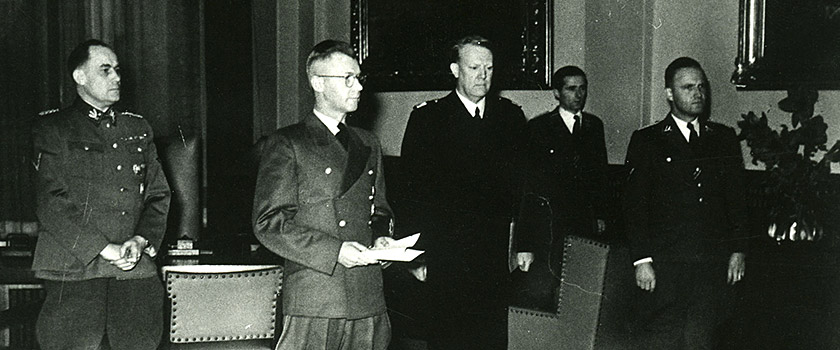
Terboven and Quisling in the Eidsvoll Gallery, 1st February 1942. Photo: Storting
When dictatorship supplanted democracy
The occupation years of 1940-45 were an unprecedented time, and a turning point in Norwegian history. The Constitution, representation of the people and the powers of the state were put out of action.
On 8th April 1940, Minister of Foreign Affairs Halvdan Koht made a statement about the escalating war situation in an open sitting of the Storting. The huge interest this attracted resulted in long queues outside the entrance to the Storting’s public gallery.
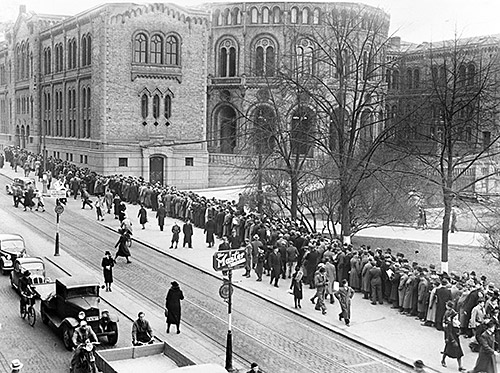
Long queues outside the Storting to hear Minister of Foreign Affairs Halvdan Koht’s statement on 8th April 1940. Photo: Storting.
The Foreign Affairs Minister informed the Storting that the Government had protested against the minelaying of Norwegian waters by Great Britain and France, and had demanded that these mines be removed. The ensuing debate was conducted behind closed doors. Despite the news that two German ships had been torpedoed off the Southern Norwegian coast, the main topic of debate was Britain and France’s violation of Norwegian neutrality. There was little doubt that tensions were heightened, but the question of mobilization was not raised.
No one imagined that the war would come to Norway that very night in the form of a German invasion.
The Storting’s escape – the Eleverum Authorization
When Carl Joachim Hambro, the President of the Storting, learnt about the German invasion on the night of 9th April 1940, he ordered the immediate evacuation of Parliament to Hamar, approximately 125 kilometres north of Oslo. A special train was put on for this purpose. The decision was made to evacuate King Haakon VII and the Government on the same train. Shortly before 7.30 a.m. that morning, the train pulled out of Østbanen Station in central Oslo, with the Royal Family, the Government and around 100 Members of Parliament (MPs) on board.
“The Storting authorizes the Government, until such time as the Government and the Storting’s Presidium is able after conferring to convene the Storting to its next ordinary sitting, to safeguard the interests of the realm and make the decisions and carry out the measures on behalf of the Storting and the Government that are deemed necessary for the security of the nation and its future.”
The special session in Hamar was convened at 1 p.m., but was suspended at 7.40 that evening when it was reported that German forces had reached Jessheim. The news left those assembled with no other option than to move once more, this time by train to Elverum, a further 30 kilometres northeast. When the session resumed in the local folk high school around two hours later, the Storting resolved to transfer its decision-making powers to the Government. What has since been called the Elverum Authorization empowered the Government “to safeguard the interests of the realm” until the Storting’s next sitting – whenever that would be.
The flight that would eventually take the Royal Family and Government into exile continued. It was not until 8th October 1945, more than five years later, that the democratically-elected representatives of the Norwegian people were able to convene once again.
The Elverum Authorization was adopted without a formal vote, and was formulated by the President of the Storting himself. Though the Authorization’s legal status has since been debated, there is no doubt that it gave the Government-in-exile the legitimacy to exercise its authority during the war.
Negotiations under pressure, summer 1940
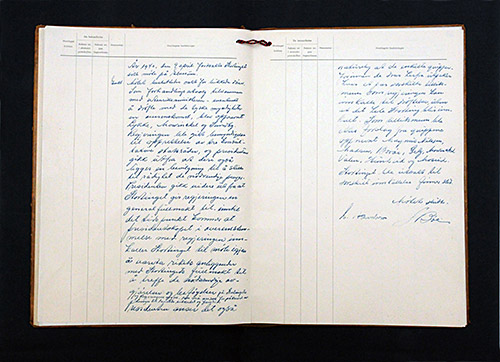
The Eleverum Authorization. Photo: Storting.
After 9th April, the Government and King were in flight and the Storting was dissolved. Little more than a week later, on 17th April, the Supreme Court, in agreement with the Germans, appointed an Administrative Council to oversee the civil administration of the occupied areas of Norway. When, on 7th June, the Government and King left Norway and the Norwegian defence capitulated, the German occupation authorities turned to the Storting in an attempt to establish a legitimate, collaborative administration.
With the majority of Norway’s MPs back in their home districts, and President of the Storting Hambro having left Norway at the same time as the Government and King, it was no simple task to convene Parliament. The Germans therefore initiated negotiations with the remaining members of the Storting’s Presidium and the members of the Administrative Council. Their aim was to install a new collaborative regime, a “National Council”, which would replace the legitimate Norwegian authorities now in exile.
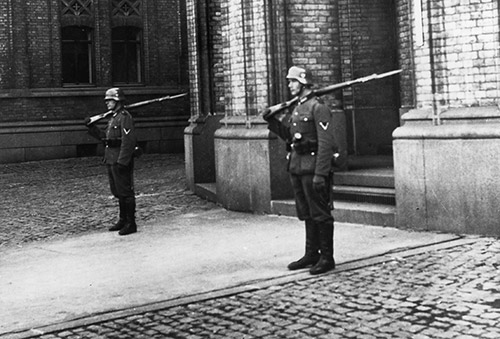
German soldiers outside the Storting’s main entrance. Photo: Storting.
Under considerable pressure from their German occupiers, the Presidium declared the Elverum Authorization invalid on 17th June 1940. With that, the Nygaardsvold administration ceased to be Norway’s legitimate government and the King could no longer exercise his constitutional duties. The proposed National Council would assume the powers of the Storting and the Government. Moreover, if the King refused the Presidium’s call to dismiss the Nygaardsvold Government and accept the new administration in Norway, the Presidium declared it would instruct the Storting to depose the Royal Family.
In his historic second “no”, the King refused the move to dethrone him and his Government. The German occupation authorities pressured the remaining MPs to hold votes in their parliamentary party groups on 10th September. A majority felt compelled to accept further negotiations with the Germans on the grounds that the Elverum Authorization had been annulled and the Royal Family deposed.
The negotiations were unsuccessful. Instead, Terboven and the German occupation forces staged a coup. In doing so, they gave up any pretence of democratic legitimacy. On 25th September 1940, Terboven installed a Norwegian government under the direct control of the Reichskommissar. Of the 13 government ministers appointed, 9 were from the Nasjonal Samling, Norway’s fascist party. This move was a turning point. Not only did it mean that Norway was under military occupation, but also that it was subjected to political Nazification.
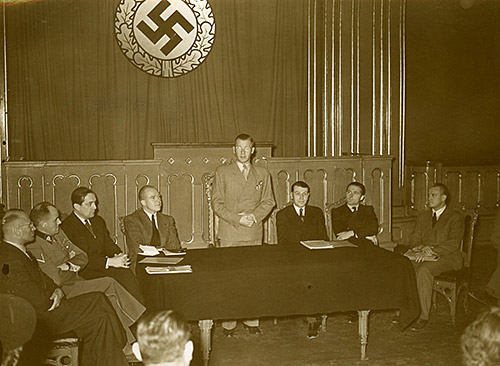
Terboven in the Storting Chamber. The painting "Eidsvold 1814" has been hidden behind a swastika. Photo: Storting.
The house of democracy in the hands of the dictators
On 9th April, the day of the German invasion, the Norwegian leader of the coup, Vidkun Quisling, moved into the Storting and installed himself in the President of the Storting’s office. From that day onwards, the building was full of German soldiers, and the Storting’s administration moved out.
Though Quisling’s illegitimate government only lasted a few days, the Storting building was occupied by Nazi Germany’s most senior representative in Norway: Reichskommissar Josef Terboven.
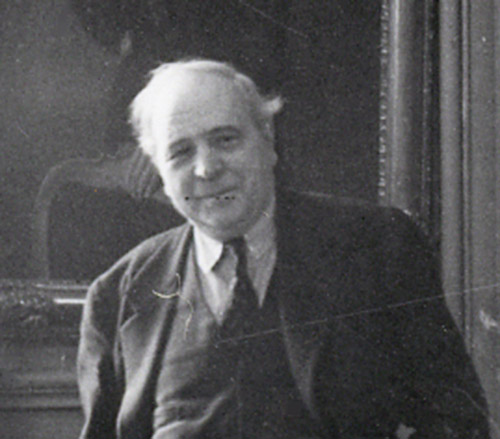
President of the Storting Hambro after Norway’s liberation in 1945. Photo: Storting.
The occupying power displaced the Storting as an institution both physically and politically during the war. Instead, the Storting’s rooms, chambers and halls were used for the new regime’s own purposes, and were filled with Nazi symbols
The Lagting Chamber was converted, and was used, among other purposes, for trials. The outside of the Storting building was guarded by German troops and decked in Nazi propaganda. For a long time, however, the Storting Chamber remained relatively unchanged. It was used to hold meetings, including when the German Minister of Propaganda, Joseph Goebbels, visited in 1940. The painting Eidsvold 1814 was later covered by the Nazis.
Reichskommissar Josef Terboven set up his office in the Eidsvoll Gallery for most of the occupation period until the Reichskommissariat was moved to Oslo Commerce School towards the end of the war. After that, the Storting building was handed over to the Norwegian Nasjonal Samling government.
Liberation
When Quisling’s government took over the Storting on 1st February 1945, the Norwegian flag was once again permitted to fly from the roof of the building after five years with a swastika on the flagpole. That same day, the building’s new occupiers were the target of an act of sabotage which smashed a number of the Storting’s windows.
After the liberation on 8th May 1945, the occupying power and its symbols were swiftly removed from the Storting building. A little over a month later, on Thursday 14th June the first sitting of the Storting in a liberated Norway was held. The Storting was once again master of its own house.
“The 89th regular Storting resumes its deliberations that were interrupted at Elverum on 9th April 1940 … at this moment, when the Storting is once again convened after testing times, our first thoughts go to all those who, during these long years, have given their lives so that we could live … The dead will live on in our hearts. We gather our thoughts in a silent prayer for their souls.” President of the Storting Hambro, 14th June 1945.
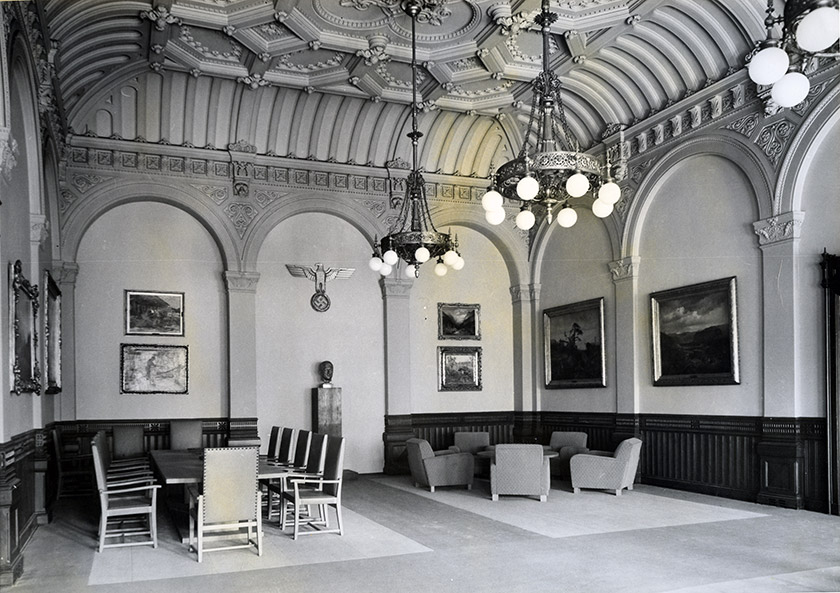 The Eidsvoll Gallery during the Nazi occupation. Photo: Storting.
The Eidsvoll Gallery during the Nazi occupation. Photo: Storting.
Last updated: 07.05.2025 15:27